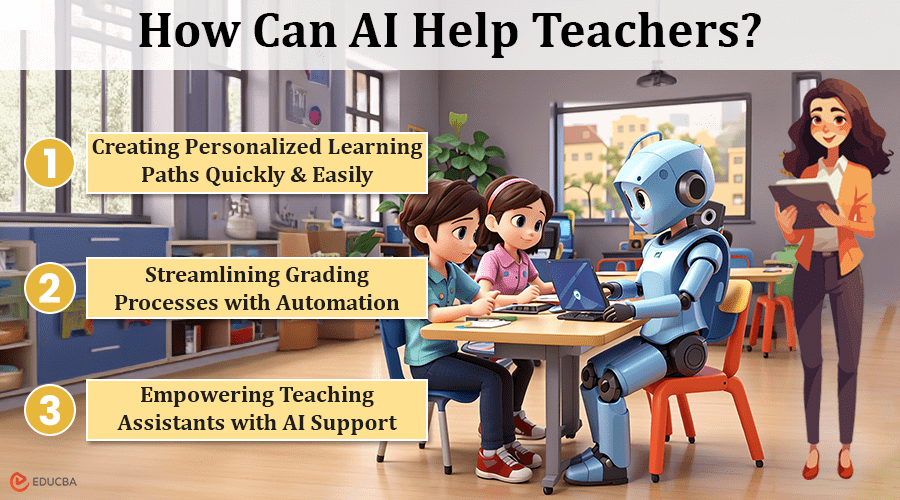
How Can AI Help Teachers in Today’s Educational Landscape?
The issue with the current worldwide education system is that it is not very flexible. Amid the growth of the booming industry of artificial intelligence, many teachers still use old methods. But how can AI help teachers?
When Chat GPT first came out, it caused much confusion, especially among teachers, who were uncertain about the role of AI in education. Some worried that students would rely too much on it instead of learning things themselves. Some countries even banned it for a while, but that is all in the past now.
Generative AI has the potential to improve teaching. It is like when the Internet first came out—it changed everything. AI can help teachers improve teaching and keep up with how the world is changing.
3 Ways AI is Helping Teachers
#1. Creating Personalized Learning Paths Quickly & Easily
Personalization is becoming increasingly important in education. AI can help by adapting learning to each student’s unique style. For example, some people learn best with pictures, while others like to get hands-on. With AI, teachers can create lessons, activities, and tests that match each student’s learning style.
Consider how online stores like Amazon have transformed shopping by suggesting items tailored to your browsing and buying habits. Similarly, students now seek a more tailored learning experience, moving away from the traditional one-size-fits-all approach. AI can play a major role in this shift by enabling educators to provide the personalized education experience that students are increasingly demanding.
#2. Streamlining Grading Processes with Automation
Automation is a trusted tool across various industries, so why not in education? As a student, you might feel writing essays every few weeks is a never-ending battle. However, it is more demanding as a teacher. Imagine having to grade countless papers and providing constructive feedback amidst tight deadlines.
Here is when the advent of AI grading offers a glimmer of hope. Advanced computer programs can swiftly assess writing style, grammar, and more. Instead of educators drowning in a sea of papers for weeks, AI can grade assignments instantly, offering tailored feedback to each student.
Furthermore, even in the education sector, operating expenses often take up a substantial chunk of the budget, sometimes surpassing 70%. Therefore, by embracing AI-powered automation, institutions can streamline operations, reduce expenses, and free up funds for other educational endeavors. Many institutions are also integrating digital tools like a childcare attendance app to automate attendance tracking and daily operations, making classroom management more efficient and less time-consuming.
#3. Empowering Teaching Assistants with AI Support
Teaching assistants, found in educational institutions worldwide, play a crucial role in supporting teachers by helping with tasks like assigning work and grading papers. However, many assistants feel their jobs do not align well with their career goals. Research shows that they often desire better pay, more responsibilities, and opportunities for professional growth.
The gap between what teaching assistants want from their jobs and what the system offers can lead to dissatisfaction. However, there is potential for improvement. AI technology can handle many tasks currently done by assistants, freeing up their time for more fulfilling work and allowing them to pursue career advancements.
Instead of seeing AI as a threat to their jobs, managers should view it as a tool to enhance the roles of human professionals. Teaching assistants can focus on tasks requiring human insight and creativity by delegating repetitive tasks to AI, thereby creating a more rewarding and impactful educational experience.
Recommended Articles
If you found this article on ‘How can AI help teachers’ helpful, you can explore more about the transformative impact of AI with these insightful articles:

